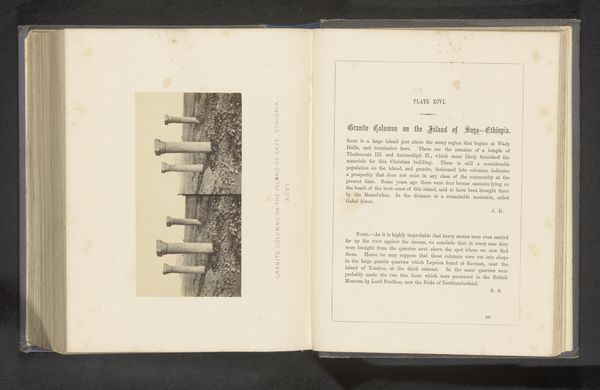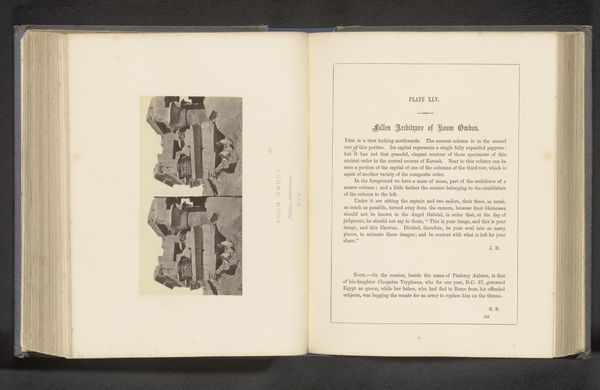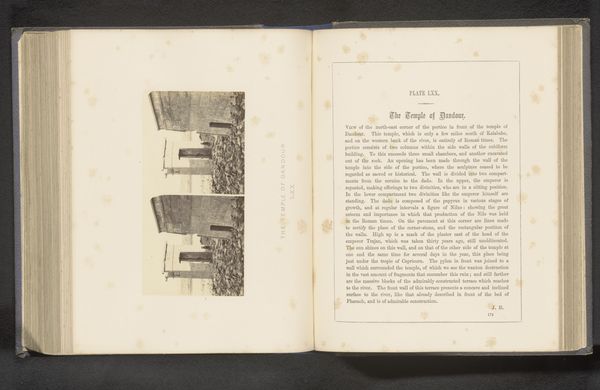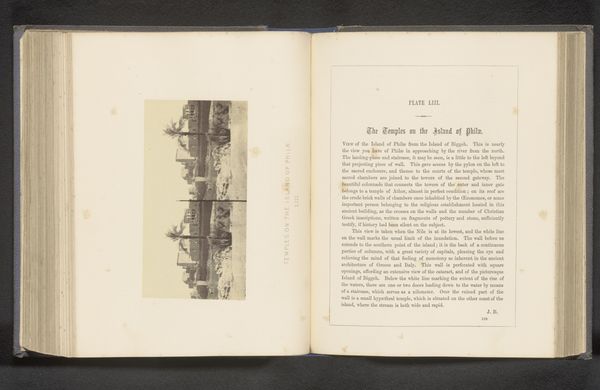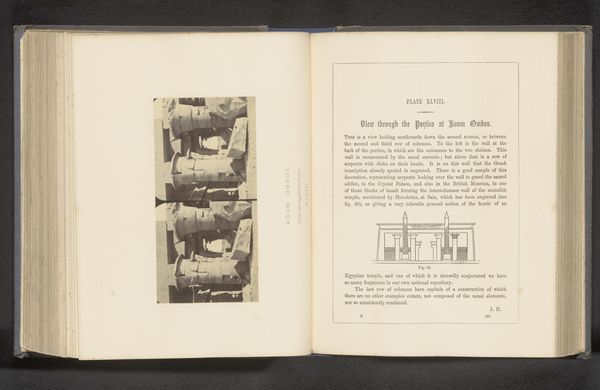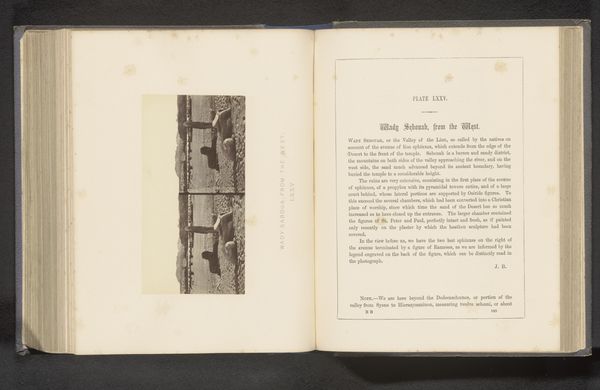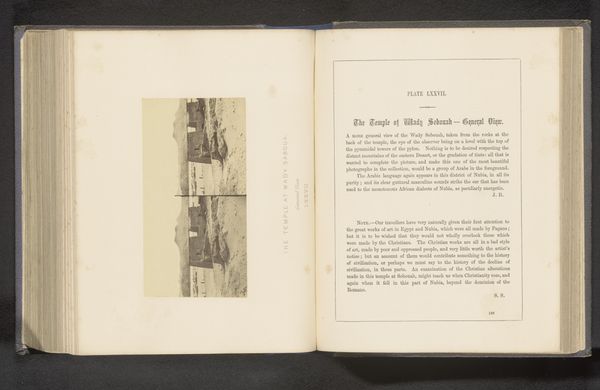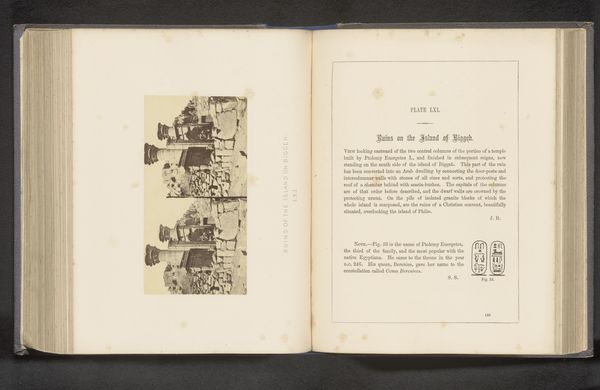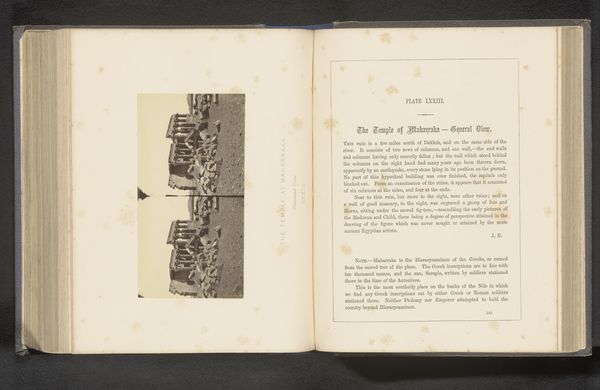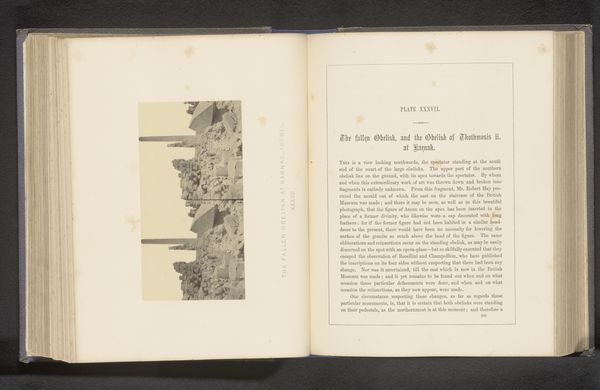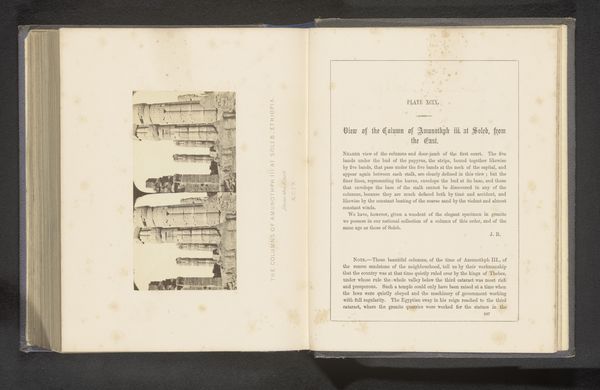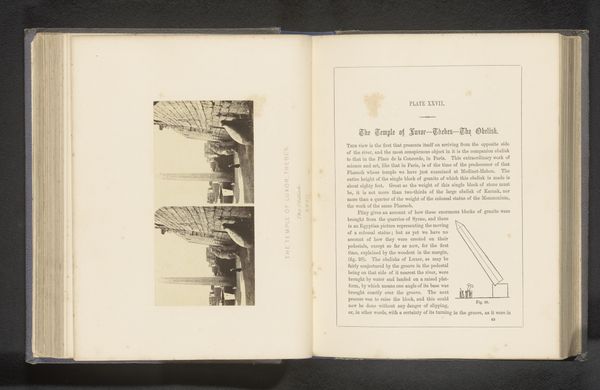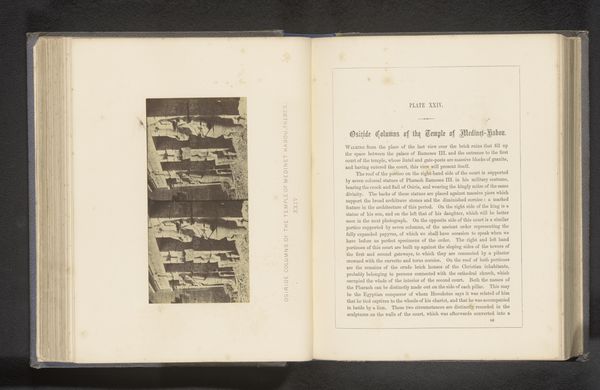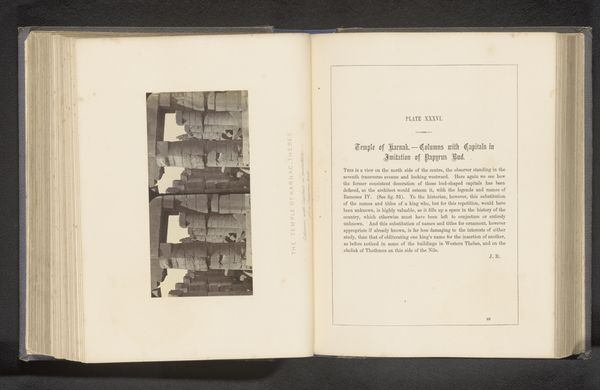
print, paper, photography, albumen-print
# print
#
landscape
#
ancient-egyptian-art
#
paper
#
photography
#
ancient-mediterranean
#
academic-art
#
albumen-print
Dimensions: height 75 mm, width 143 mm
Copyright: Rijks Museum: Open Domain
Editor: Here we have "Tempel te Semna," or "Temple at Semna," an albumen print by Francis Frith, created before 1862. It's fascinating to see these ruins presented as a stereoscopic image within a book! What strikes me is the geometric interplay between the fragmented columns and the harsh sunlight. What do you see in this piece? Curator: Indeed. Let us examine the intrinsic elements of the composition. Notice how the artist, Frith, employs the stereoscopic format. The duplication draws attention to the formal qualities of the temple ruins. The repetition is not merely mimetic; it accentuates the shapes, the shadows, and the texture of the stone. Observe the interplay of light and shadow; the strong contrast emphasizes the geometrical forms and their degradation. How do these contrasts structure the viewer's experience? Editor: The harsh lighting definitely accentuates the ruinous state, making you think about the passage of time and forces of erosion on the material. Curator: Precisely. Consider how the albumen print, as a photographic medium, offers a particular level of detail and tonal range. The very texture of the paper, coupled with the chemical processes, contributes to the visual effect. The horizontal lines in the left-side picture contrast sharply with the shapes of the ruined stones. This formal strategy invites contemplation on decay, the permanence of geometry against the transience of material. Editor: It’s interesting to think about how the medium itself contributes to the overall meaning. I'd not thought of the physical processes of creating a photographic print as impacting how the image's themes are understood! Curator: Yes, through examining the work’s material presence we can analyze its aesthetic impact more clearly. Considering photography is not just about representation but presentation. What can you observe from that aspect? Editor: Thanks! This discussion gave me so much to think about.
Comments
No comments
Be the first to comment and join the conversation on the ultimate creative platform.
